Our family chili recipe delivers 31 grams of protein per serving and keeps calories at 394 per bowl. This hearty homemade chili yields 16 cups, which makes it perfect to feed a crowd or store leftovers in the freezer for up to three months.
Many people say they have the best chili recipe, but our family’s version has earned its reputation through three generations. We’ve perfected the balance of lean ground beef, sautéed onions, and a precise spice blend. Our recipe’s secret comes from a 90-minute simmering technique that creates deep, complex flavors.
This county fair winning recipe holds special meaning to us, and I want to share it with you. You’ll learn our family’s stories, key techniques, and troubleshooting tips that will help you become skilled at making this classic dish in your kitchen.
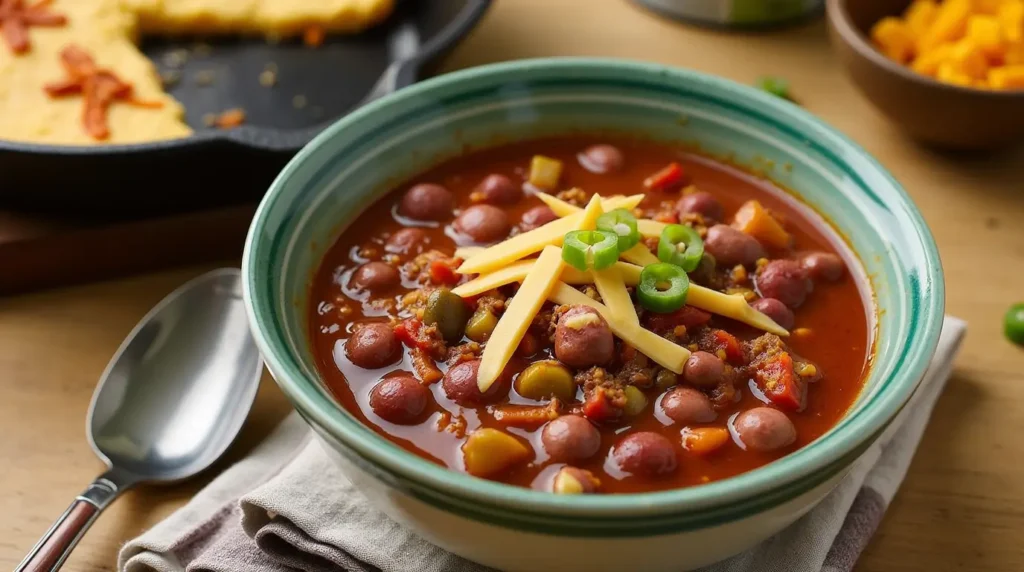
Table of Contents
The Story Behind Our Award-Winning Family Chili
Our chili recipe story started like many Texas families, with recipes passed down through generations. Over the last several years, our family managed to keep the authentic Texas-style preparation that makes a championship chili.
Three generations of chili recipe making
My grandmother created her signature chili recipe during the tough times of the 1950s. She refined her technique after drawing inspiration from historic chili parlors that thrived in Texas. The sort of thing I love about her approach was knowing that perfect chili needed more than just following a recipe—you just need an intimate knowledge of spice combinations and cooking methods.
How grandma’s recipe evolved
My grandma’s original recipe went through thoughtful changes over time. She found that there was extra flavor when she added a half stalk of diced celery. On top of that, she tried different chili powders and spice combinations until she found the perfect blend. She was willing to adapt while keeping the core elements of traditional Texas chili, which made our recipe special.
The county fair competition trip
We paid close attention to detail when preparing for the county fair competition. Here’s what made our chili stand out:
- Precise ingredient selection focusing on meat quality
- Strategic layering of spices for depth of flavor
- Careful temperature control during the cooking process
The competition was intense, with nearly 40 cooks participating under the big tent. Notwithstanding that, our family recipe stood out by balancing traditional elements with state-of-the-art touches. The judges assessed entries based on specific criteria, including consistency, flavor complexity, and overall presentation. The People’s Choice Award added extra excitement to the competition, and public tasting started right at 3 PM.
Our county fair victory became part of a proud tradition of competitive chili cooking that traces back to the first recorded chili contest at the State Fair of Texas in 1952. This achievement helped verify three generations of recipe refinement and countless hours of preparation.
Essential Ingredients That Set Our Chili Recipe Apart
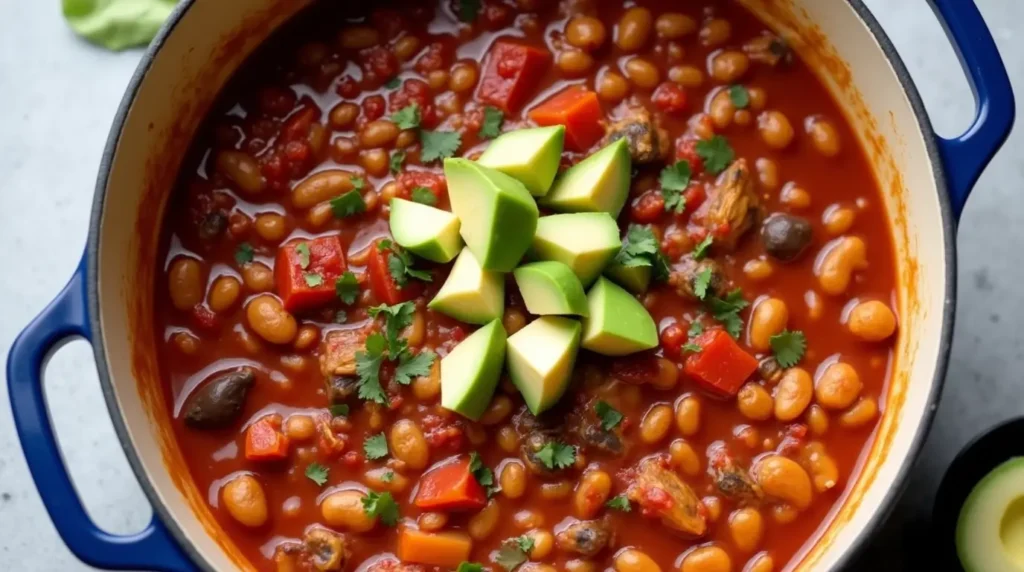
The secret to award-winning chili recipe starts with picking the best ingredients that complement each other. We found that there was a perfect mix of ingredients after testing different combinations over the years.
Selecting the perfect meat blend
Our championship chili’s foundation comes from a precise mix of meats. We don’t use regular ground beef. Instead, we mix 90% lean ground chuck with diced brisket and short ribs. This combination creates different textures and deeper flavors. Many recipes use just one type of meat. But we found that mixing ground chuck with bacon gives the chili a nice smoky taste.
The secret spice combination
The spice blend makes this chili recipe stand out from regular recipes. We combine:
- Three distinct chili powders – ancho, chipotle, and Mexican – to create layers of heat
- Freshly ground cumin (essential for authentic flavor)
- Smoked paprika for depth
- A pinch of Ceylon cinnamon added halfway through cooking
- Natural cocoa powder for earthiness
Yes, it is magical when we bloom these spices in hot oil before adding wet ingredients. This step releases their essential oils and makes the flavors more intense.
Critical ingredient quality factors
Your chili’s final taste depends on each ingredient’s quality. We pick grass-fed and grass-finished beef because it tastes better and has more nutrients. Regular canned tomatoes won’t do. We use fire-roasted ones to add a subtle smoky flavor.
The way you handle ingredients makes a big difference. We cut off extra fat from meats because it doesn’t take in spices well and can make the chili too oily. The beans need a good rinse to get the right texture.
The liquid ingredients play a surprising role in quality. Our mix of beef broth and lager beer works great. The clean, crisp lager balances out the rich spices. The beer’s malt adds depth without taking over the other flavors.
Mastering The Classic Chili Technique

Making championship-worthy chili recipe requires you to become skilled at cooking techniques that revolutionize basic ingredients. The gap between good and exceptional chili depends on how we executed basic methods.
The proper browning method
Outstanding chili’s foundations start with meat browning techniques. You should pat the meat dry and let it reach room temperature. The best results come when you brown larger cuts of meat whole before cutting them into smaller pieces. This approach creates deeper flavors than browning pre-ground meat.
The game changes when you treat the meat with a baking soda solution (¾ teaspoon baking soda mixed with 2 tablespoons water for 2 pounds of meat). The mixture needs 15-20 minutes to sit before cooking – this helps the meat stay moist and brown better.
Timing and temperature control
Rich flavors develop substantially with proper temperature management. Medium-high heat works best for browning, then reduce it to a gentle simmer. The ideal simmering time spans 45 minutes to 1½ hours. This longer cooking time tenderizes the meat perfectly while flavors blend together.
Flavors develop best with steady temperature throughout cooking. Hot water added ½ cup at a time helps when the mixture thickens too much. This maintains the perfect consistency without affecting the carefully developed flavors.
Layering flavors strategically
Championship chili recipe demands systematic flavor building. Start by cooking aromatics in rendered beef fat until soft and clear. The tomato paste should cook until it turns deep brick red. This step enhances tomato flavor substantially.
Spices need at least one minute of cooking until fragrant. This “blooming” releases their essential oils and deepens their flavors. Broth or beer helps deglaze the pan, incorporating all flavorful browned bits from the bottom.
A pro chef’s secret: a teaspoon of apple cider vinegar brightens flat-tasting chili. This small addition enhances all the flavors you’ve carefully built throughout cooking.
Competition-Winning Presentation Tips
Presentation is a vital part of competition chili recipe judging. The core team assesses entries based on visual appeal, consistency, and serving temperature. They look at specific criteria that include the chili’s appearance, aroma, and overall taste.
Achieving the perfect consistency
Competition chili recipe needs a balanced ratio between sauce and meat. You should avoid texture problems like graininess or wateriness. The chili should fit well on a small plastic teaspoon. The liquid content should be slightly more than the meat. Fill your judging cups about an inch from the top. Make sure no grease floats on the surface as the chili cools.
Your chili might appear grainy at times. Get into your chili powder’s grind texture to fix this. Some competition cooks have a special technique. They separate the gravy from meat before serving. A quick blend of the gravy and recombining it with the meat creates a silkier finish.
Garnish selection and placement
The right garnish can raise both presentation and taste. Here are competition-tested topping options:
- Finely grated cheddar cheese
- Diced green onions
- Fresh jalapeños
- Sour cream or Mexican crema
- Crispy corn chips
Without doubt, proper garnish placement affects the overall presentation. Arrange your toppings in small, separate bowls with clear labels to stay organized. Cold toppings should remain chilled in specialized bowls to maintain food safety after serving.
Serving temperature secrets
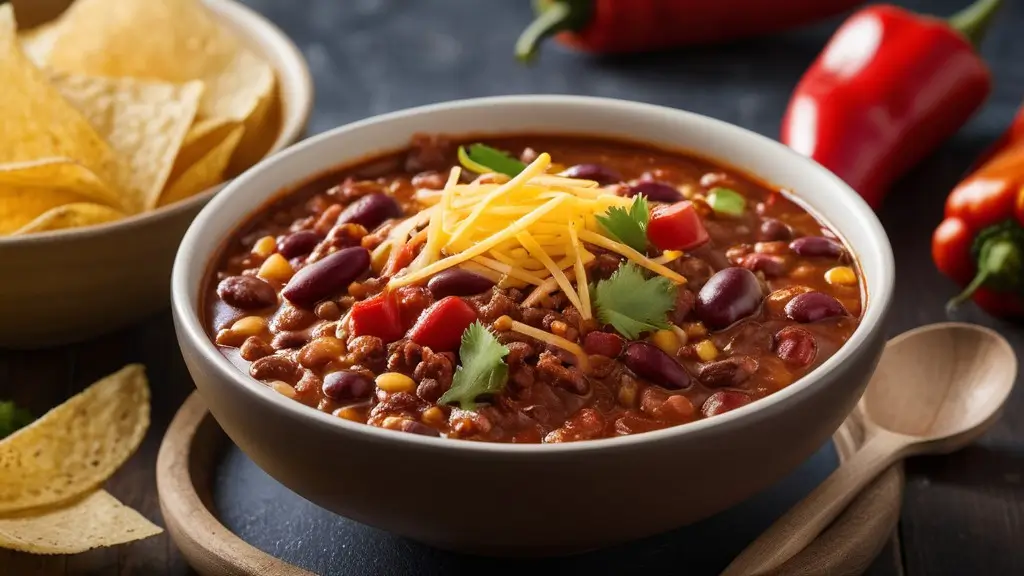
You retain control over taste and safety by serving at the right temperature. The USDA recommends keeping hot chili above 140 degrees Fahrenheit to prevent harmful bacteria growth. Use warming trays, chafing dishes, or a slow cooker set to “low” or “keep warm” during competition or extended serving periods.
Watch out for the two-hour rule. Chili recipe shouldn’t stay in the temperature danger zone (between 40-140°F) for more than two hours. Smaller portions work better at events. Refresh them regularly to maintain optimal temperature and presentation.
Timing makes all the difference in competition settings. Your chili recipe should be hot enough to release its aromatic compounds. However, judges need to taste subtle flavor nuances. Note that judges use small plastic spoons to evaluate samples. Both consistency and temperature must work together to create the best presentation.
Troubleshooting Common Chili Recipe Mistakes
Even seasoned cooks face problems with their favorite chili recipe sometimes. You can get consistent results by knowing common issues and how to fix them.
Avoiding texture problems
We noticed texture problems come from wrong liquid ratios and cooking methods. Too much broth or stock makes chili watery. Canned tomatoes work better than fresh ones because fresh tomatoes release extra liquid when heated. The liquid won’t reduce properly if you don’t cook it long enough.
Good chili should fill your spoon with solid ingredients, not just liquid. Your toppings like sour cream and cheese should stay on top without sinking. You’ll get the perfect consistency by watching your ingredient amounts and cooking methods carefully.
Balancing spice levels
Your chili might turn out spicier than you wanted. Here’s what works to adjust the heat:
- Add dairy products with casein protein that binds with capsaicin to cut the heat
- Put in starchy ingredients like potatoes or rice to soak up extra spice
- Add a bit of honey or brown sugar to balance the heat
- Use acidic ingredients like lime juice or vinegar to tone down spiciness
Whatever method you pick, taste your chili recipe often while adjusting seasonings. The serving temperature changes how spicy it tastes, so review heat levels at the right temperature.
Fixing common issues
To fix grainy texture, get into your chili recipe powder’s texture and think about using finer ground spices. Tomato paste improves both thickness and flavor when chili lacks depth. A half tablespoon of sugar balances bitter tomato flavor.
You can thicken runny chili recipe by simmering it uncovered for 5-10 minutes. Another trick is to mash some beans to release their natural starches – this thickens the mix while keeping authentic flavor.
Note that chili recipe tastes better after resting – flavors blend better overnight in the fridge. This waiting time helps sharp flavors mellow out and creates a better taste blend.
If your chili recipe gets too thick when reheating, slowly stir in hot beef broth or stock until it’s just right. This keeps all those flavors you worked hard to develop while fixing the texture.
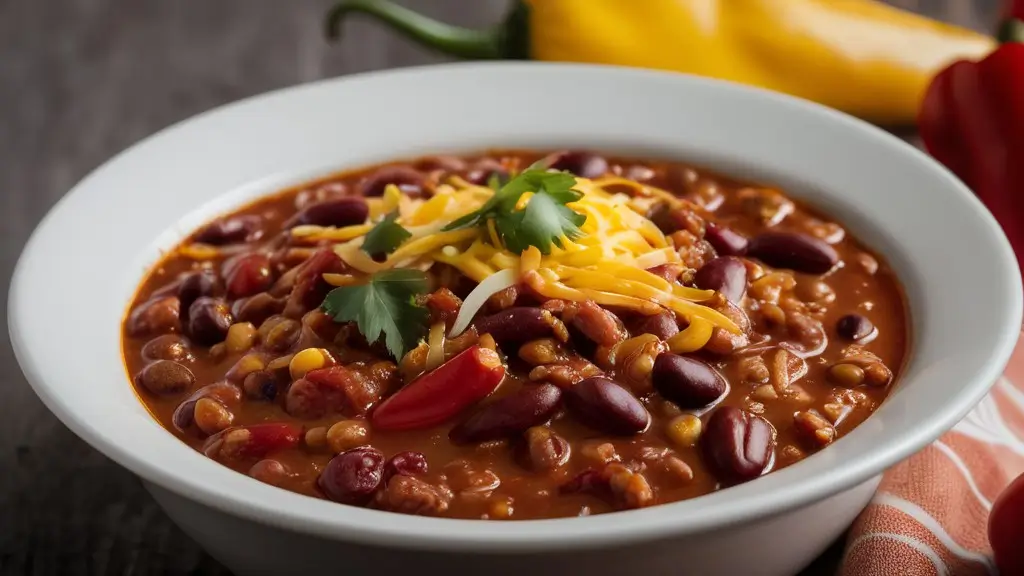
Conclusion
This family chili recipe shows how great cooking combines tradition with constant improvement. Three generations have refined it through careful ingredient selection and mastering core techniques. The result? A championship-worthy dish that brings everyone together.
The trip from grandma’s kitchen to county fair victory definitely taught us valuable lessons about patience, precision, and perseverance. Each bowl showcases decades of family knowledge – from selecting premium meats to balancing spices perfectly.
Anyone can create award-winning chili recipe with proper guidance and attention to detail. These time-tested tips will help you achieve consistently delicious results, whether you’re fixing texture problems or enhancing presentation. You can find more recipes and food ideas at recipesnutritious.com if you want to explore additional culinary adventures.
Note that great chili goes beyond just following a recipe. Success comes from understanding techniques, respecting ingredients, and sharing cooking’s joy with others. Your turn to create memories around your own pot of championship chili starts now.
FAQs
Q1. What’s a surprising secret ingredient that can elevate your chili? A small amount of balsamic vinegar added just before serving can enhance the flavor profile of your chili. It adds depth and balances the richness of the dish.
Q2. How can I make my chili competition-worthy? Focus on using finely cut meat instead of ground beef, minimize grease, and avoid fillers like beans. Ensure your chili has an appealing appearance, aroma, and taste. Pay attention to consistency and spice balance for the best results.
Q3. What’s the key to achieving the perfect chili consistency? Aim for a balance between sauce and meat, with slightly more liquid than solids. The chili should coat a spoon without being too thin or thick. If needed, simmer uncovered to reduce excess liquid or add hot broth to thin it out.
Q4. How can I adjust the spice level in my chili if it’s too hot? To reduce heat, try adding dairy products like sour cream, incorporating starchy ingredients like potatoes, or including a small amount of honey or brown sugar. Acidic ingredients like lime juice can also help neutralize spiciness.
Q5. What’s the best liquid base for flavorful chili? A combination of beef broth and lager beer can create a rich, complex flavor. The beer’s malt notes enhance depth without overpowering other flavors. If alcohol is not preferred, using a high-quality beef broth alone can still yield excellent results.

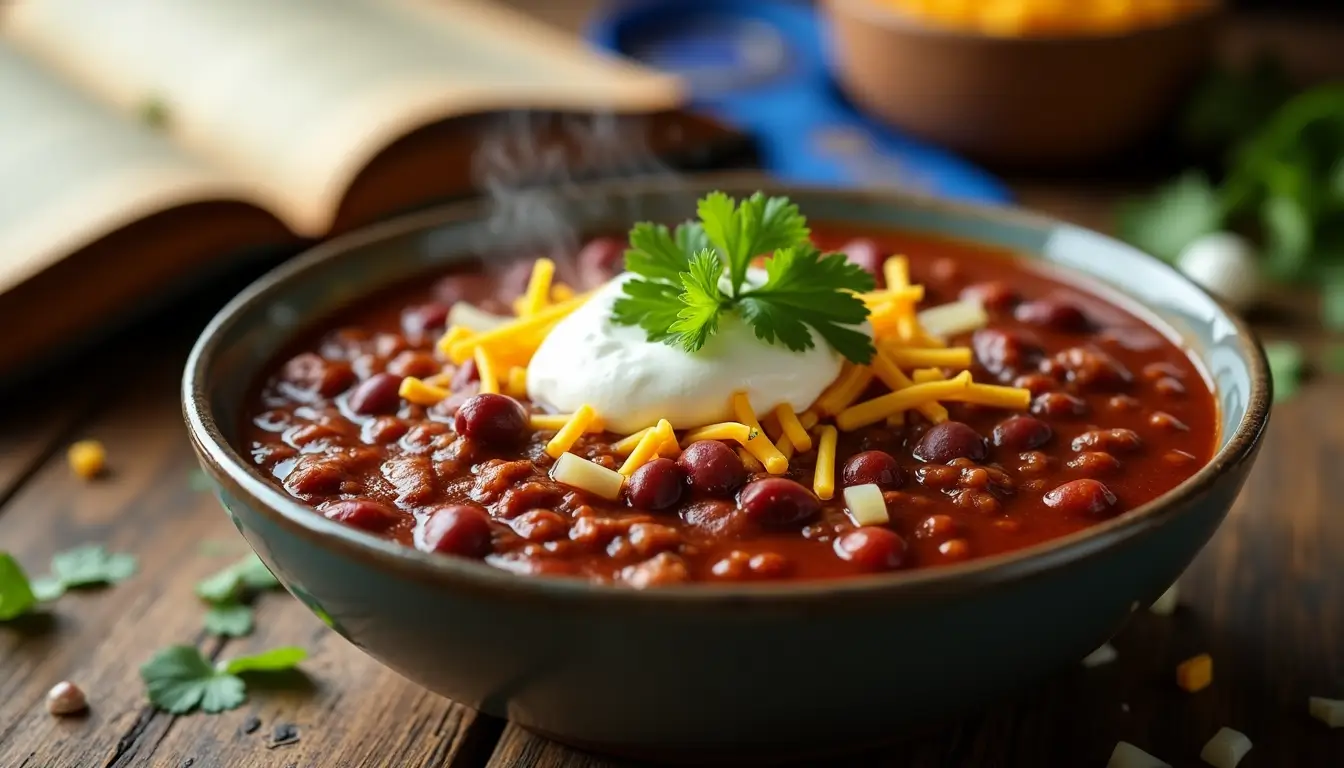
1 thought on “The Secret Family Chili Recipe That Won Our County Fair”
Comments are closed.